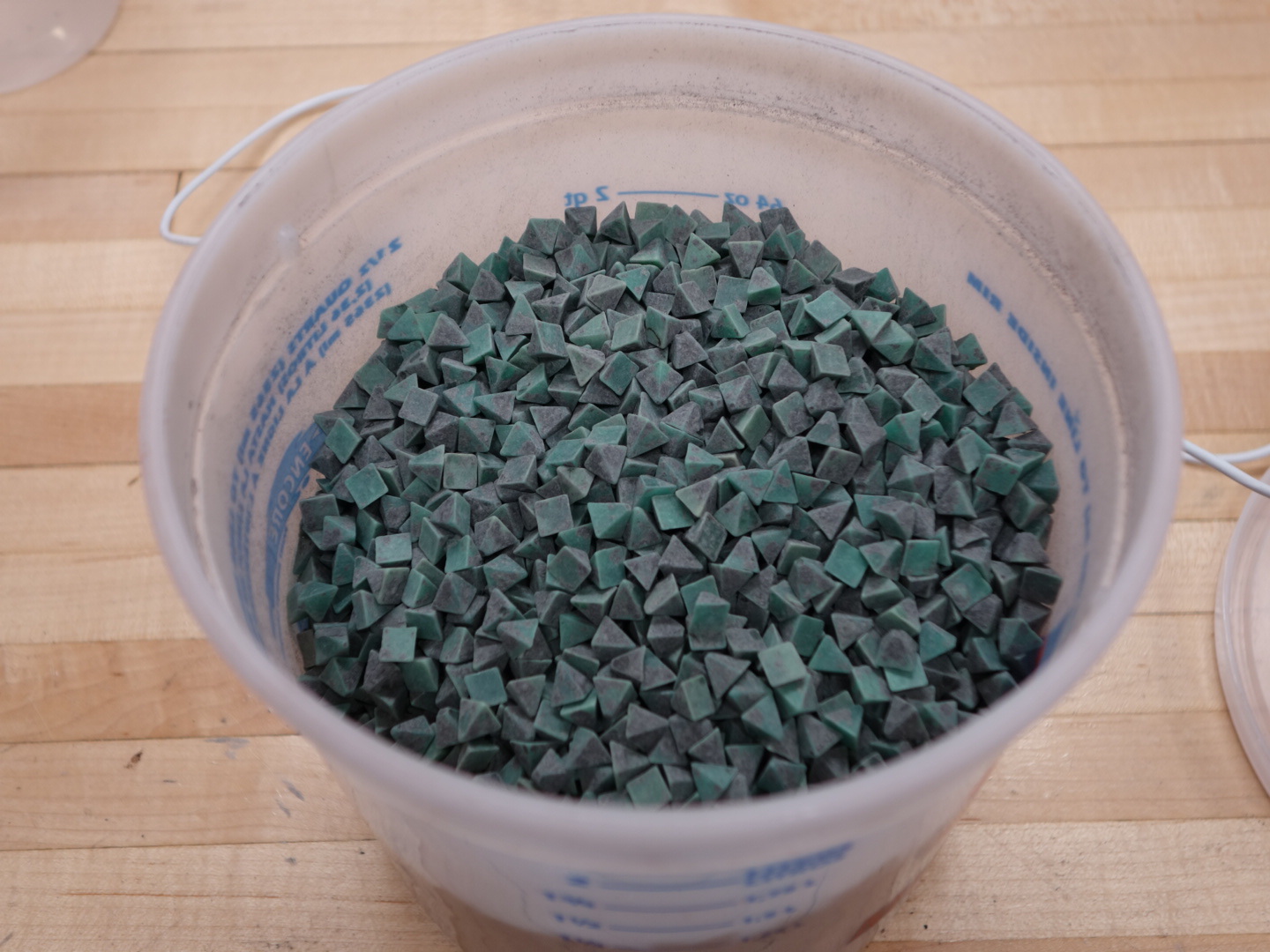Every antique fan collector and restorer knows that there is LOTS of hardware used to assemble these old fans. All hardware is either brass or steel, the older fans having more brass than steel. When doing a ground-up restoration it is very important to consider these pieces of hardware in order to achieve a fully polished looked. Because the hardware is so small, it's often very time consuming to degrease, clean, polish and/or blacken the hardware.
I realized that there is no reason to be doing all of this work by hand when solutions exist to make cleaning hardware an effortless operation. Enter the "vibratory tumbler." A vibratory tumbler vibrates a container of media containing your hardware items and abrasive media. Below is my operation for producing grease free, rust free, and bright hardware items without doing tiresome labor.
Click on any image to enlarge
Step 1: Degrease
I degrease using mineral spirits but if the part is particularly greasy, carburetor cleaner or Purple Power may be a better choice. This can be done by soaking and scrubbing. Another option is to place the parts in your selected degreasers within an ultrasonic cleaner for around 30-90min. The ultrasonic cleaner reduces labor because it eliminates the need to scrub the parts.
After degreasing it's important to dry the parts thoroughly by letting them air out on a sheet of shop towel.
Step 2: Tumble in Green Pyramid Media
Green pyramid media is used to remove oxidation and dirt from screw threads, drive recesses, and other small openings. It is considered a "cutting" media. I tumble for around 12 to 24 hours but overnight is usually sufficient. Two additives are best used when tumbling: rubbing compound and a dryer sheet:
- WGF's Tip: Add a few squirts of auto rubbing compound to the media and you will notice amazing results. Let the tumbler mix up the media and rubbing compound for a few minutes.
- Rip a dryer sheet into several smaller pieces and add it into the tumbling container with the media. The dryer sheet will catch excess dust and make clean up a breeze.
Step 3: Tumble in Corn Cob Media or Walnut Shells
This step serves the function of brightening the hardware after it has been cut.I've not noticed much of a difference between either corn cob media or walnut shells. Both seem to do a good job. For steel the effect is less noticeable but it will really make brass hardware pop.
With this step I also tumble for around 12 to 24 hours. Use the same rubbing compound and dryer sheet tricks as above.
Step 4: Polish Brass Hardware
You will still need to polish the brass hardware to achieve a beautiful luster but the tumbling operations will greatly diminish the amount of time that polishing takes.
Conclusion
Tumbling hardware is an easy way to reduce the amount of time you spend on your fan restorations. I do not feel the finish after tumbling is good enough to go on the fan as-is. It's best used prior to polishing brass hardware or cold-bluing steel hardware. I hope you find these techniques useful.


